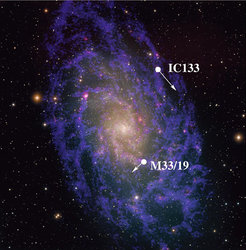Radio Astronomy as a way to explore the universe
Since the earliest of times, space has inspired our imagination. Cinema and television deeply influence the picture that we have of what goes beyond our daily lives on Earth. Many of us are familiar with terms like galaxies, extragalactic systems, comets, and asteroids.
Radio Astronomy as a leading field of expertise

Since its very beginnings around 1932, radio astronomy has developed into one of the most important methods of exploring the universe. This statement is proven by the fact that almost all of the observational astronomers who have won the Nobel prize were radio astronomers; in 1974 (Sir Martin Ryle & Antony Hewish), 1978 (Arno A. Penzias & Robert W. Wilson), and most recently in 1993 (Russell A. Hulse & Joseph H. Taylor Jr.).

What does radio astronomy do?
By observing at radio wavelenghts radio astronomy can explore the depths of space. Observations made with the largest optical instruments can be complemented in this way. In contrast to optical procedures, radio astronomical observations are not hindered by 'clouds of dust' in the cosmos. For instance, it was only possible to determine the exact structure of the Milky Way with radio astronomic measurements. Generally speaking, the optical astronomy can see the “thermal universe” whereas radio astronomy is open to the “magnetic universe”. Furthermore, previously unknown astronomical objects like quasars and pulsars have been discovered.
What does the Institute explore?
The Institute's fields of study encompass many questions from the general field of astronomy. Early stages in the development of the universe can be examined by means of gravitational lenses. Observations and theoretical analyses concerning stellar evolution are also on the agenda, as well as the exploration of magnetic fields in spiral galaxies like the Andromeda nebula. Last but not least, comets and asteroids are investigated.

